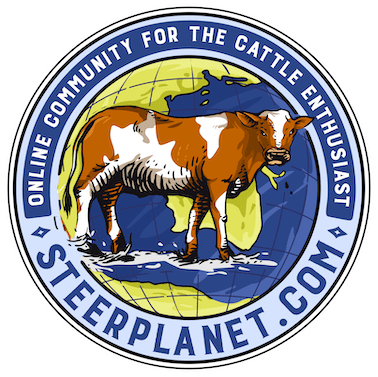No, the beef industry is not driven by the dairy industry. Dairys do not own feedyards that I know of. They are not members of NCBA. Holstein bull calves are a by product of the dairy industry. When day olds go lower than $20, they simply put them down. Not worth it to them. They could care less. Yes they like it when the day olds trade for $100 but their dairy don't depend on that as a true source of income. If one thinks about research within a breed, one has to agree the Holstein as been researched farther than any other breed. They had looked into characteristics to increase milking. Their records go way back. One of the characteristics that were bred into the cow to produce more milk was the ability of increase consumption. The more they consume, the more milk produced. This has been pass on to its bull calves. Now here's an animal with superior consumption. Feedyard have found a way to produce a quality beef out of the dairys by product. Calves arrive at feedyards weighing 275 and about 90-120 days of age. Within a week, they are on a high energy ration. No starter or grower. These animal will go to market at 340-380 days on feed. These animal are very young. This is passed on as tenderness in its meat. They are feed high energy ration for long periods of time. This makes the grade. Holsteins easily grade 85-95 % choice/prime. In the west, dairymen will use sires that offspring is tolerant to the heat. Its is said the 8 sires account for 85% of calves in the west. When one looks at a pen at a feedyard or a rail in the cooler, they are all as even as can be. Almost like clones. Not too long ago, consumers did not want too much cover on its beef. Holstens have very little back fat. Holstein will not deposit fat on its cover, but will deposit fat in its kidney, pelvic, heart (KPH). It is comparable the amount in weight to the fat a crossbred has on cover. It is easier and cheaper for a packer to remove fat from a Holstein with one swipe of a knife in the KPH than to trim a whole carcass of a crossbred. Export markets has also asked for age verified cattle. Dairymen have kept extensive records of their herd. Calves are tagged with unique id eartags or even eid tags. Feedyards are able to account to the packer the age of every Holstein produced. So now we have a product that is young (tender), marbled (Choice/Prime), age verified (export) and as evenly raised as can be. Sounds like a success that should be embraced by the beef industry. Once hides are removed at the packing plant, all breeds become BEEF. Brandt has done an excellent job marketing its beef. But all major packers have a box for its Holstein line. National Beef plant in southern California harvest 70-80 % Holsteins. Some times even more. They ship more beef into Japan than any other plant in the US. It only harvest 2400 hd a day. We are all in a dynamic industry. We should embrace each other niche that we may have. We should educate each other so we can all work together to increase our industry.
